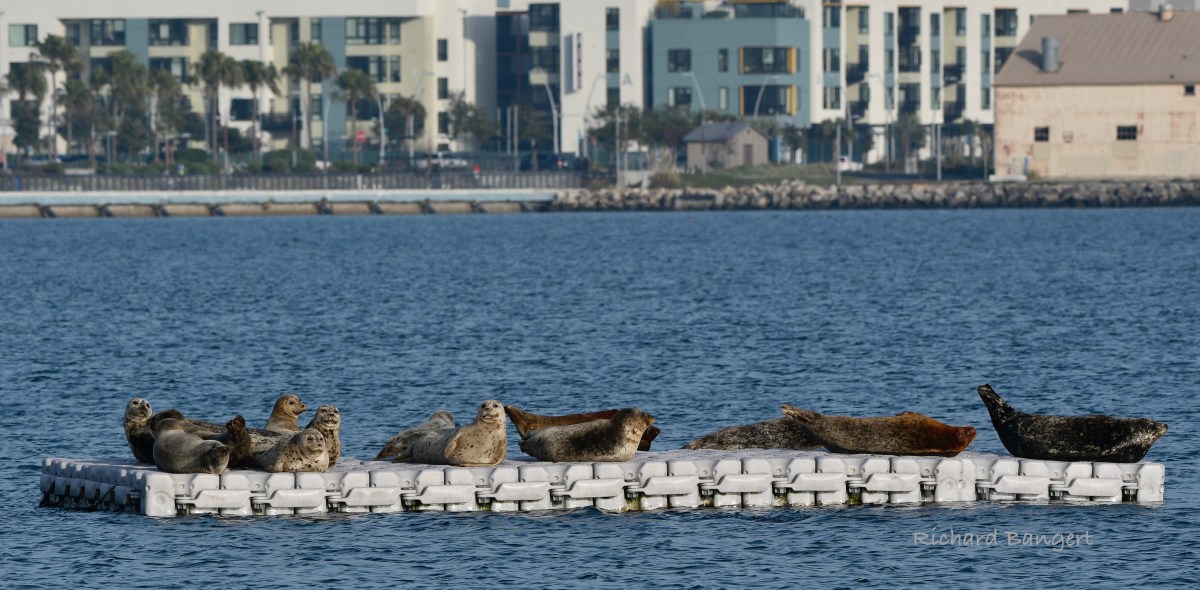Over the years, harbor seal observers on the former Alameda Point Harbor Seal Monitors Facebook page often asked, “Do we need another harbor seal float?” It appears the seals have provided their own answer.
December is when the numbers of harbor seals start increasing at Alameda Point in anticipation of the winter herring spawning in the vicinity. The influx of seals leads to overcrowding on the specially built float near the ferry maintenance facility and Bay Trail. It has been happening since the harbor seal float was deployed in the summer of 2016. Again this December, the float has been fully occupied with as many as 75 seals (verified by numbering a printed photo) during part of the day and not an inch to spare.
Harbor seals arriving at Alameda Point this December found an alternative spot to the overcrowded float when they ventured into the nearby Seaplane Lagoon. Their additional haul-out location is on a plastic commercial dock owned by Saildrone, the maker of autonomous battery-powered boats capable of gathering marine scientific data around the world. Saildrone vessels, manufactured in a hangar on West Tower Avenue, can often be seen moored in their leased space in the Seaplane Lagoon.
Continue reading “Harbor seals make use of commercial dock in Seaplane Lagoon”






